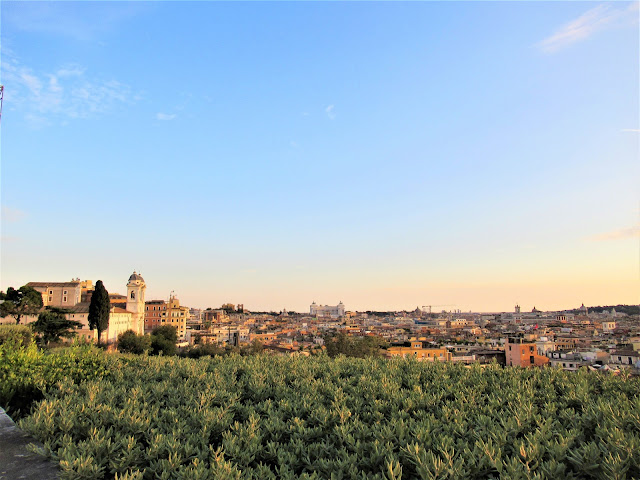The steps were designed by both Alessandro Specchi and Francesco Specchi. The project lay dormant, until Pope Clemente XI Albani renewed interest in it. The "Spanish Steps" were inaugurated in 1725.
During Christmas time a 19th-century crip is displayed on the first landing of the staircase. During May, part of the steps are covered by pots of azaleas. The steps are not a place for eating lunch, being forbidden by Roma urban regulations, but they are usually crowded with people. On March 20, 1986 a McDonalds reataurant was opened near the Spanish Steps.
In the eighteenth century the Piazza di Spagna area was known to the Romans as "er ghetto de l'Inglesi; all rich foreigners were given by them honoray British citizenship. Still today the Piazza di Spagna is one of the first ports of call for any foreign traveller in Rome. It is the heart of the smartest shopping district and those two venerable institutions the Caffè Greco and Babington's Tea Room continue as general international rendezvous.
TRINITA' DEI MONTI
The Spanish Steps lead to the church of Trinità dei Monti, which is one of the landmarks of Rome. It was originally built as the conventual church for the monastery of the Minims of St. Francis of Paula.
It was begun in 1495. King Charles VIII gave 347 golden scudi for its construction. Successive popes, kings of France and cardinals subscribed to its building and that of the monastery. The striking facade, with its twin belfries, was not completed for another century. The interior contains two large works by hand of Daniele da Volterra.
Trinità dei Monti di Giambattista Bassi (XIX century)

The oldest architectural feature of the Piazza di Spagna is the fountain of the Barcaccia. The delightful "old barge", sinking in the inadequate pool of water, was designed either by Pietro Bernini or his famous son, the great Gian Lorenzo (modern art historians incline towards the latter). In any case it provides an ingenious solution of the problem posed by the lack of pression in the aqueduct of the Acqua Felice, which feeds it, that rendered the more customary jets and sprays of a higher fountain impossible.
THE FOUNTAIN OF THE BARCACCIA
A little farther along in the narrow part of the square is the column commemorating the promulgation of he dogma of the Immacolata Concezione.
At the far end of the piazza is the vast Palace of the Congregation of the Propaganda Fide, an institution founded by Gregory XV in 1622. The Piazza di Spagna facade was rebuilt by Gian Lorenzo Bernini in 1642 - 44.
THE SPANISH EMBASSY
The Spanish Embassy to the Holy See
VILLA MEDICI
At the left of the church of Trinità dei Monti there is Villa Medici.Since it was purchased by Napoleon in 1803, the Villa has housed the French Academy, the doyen of all the foreign schools of art in Rome. In the Villa Medici was prisoned Galileo from 1630 to 1633 by order of the Inquisition. At this time, the Villa belonged to the grand dukes of Tuscany, having been purchase by Cardinal Ferdinando de' Medici in 1580.
Close by is the gate to the Gardens of the Villa Medici.
VISTE PANORAMICHE
I CAFFE'
Babington's Tea Rooms
Il Caffè Greco
Via Condotti a Natale
Via del Corso a Natale
There are always many people in the square.
ROME - ROMAN FORUM
http://johncristiani.blogspot.it/2015/02/rome-roman-forum.html
ROMA - PIAZZA NAVONA E SANT'AGNESE IN AGONE
http://cristigianni.blogspot.it/2016/11/roma-piazza-navona-e-santagnese-in-agone.html
Vedere anche:

















































Nessun commento:
Posta un commento